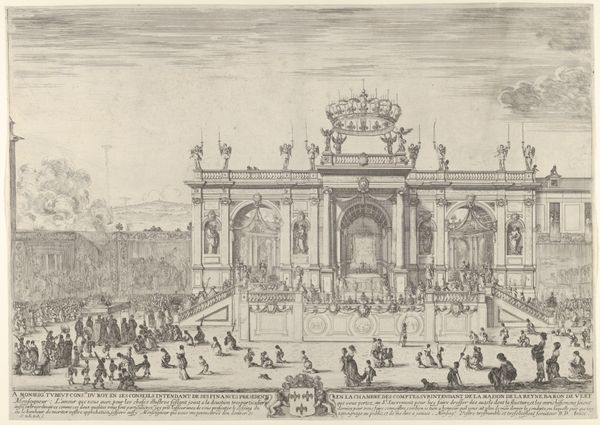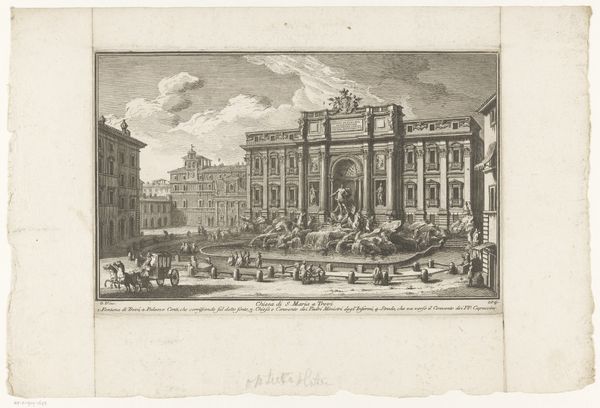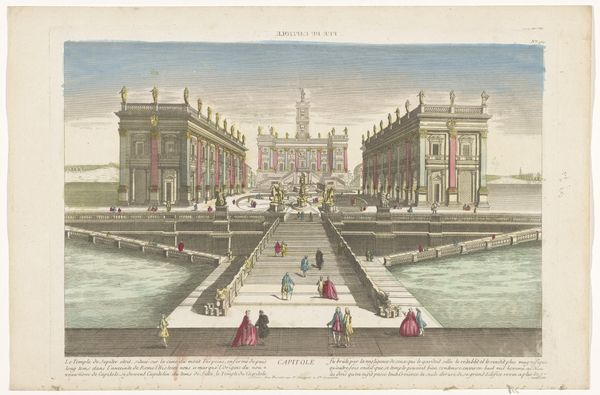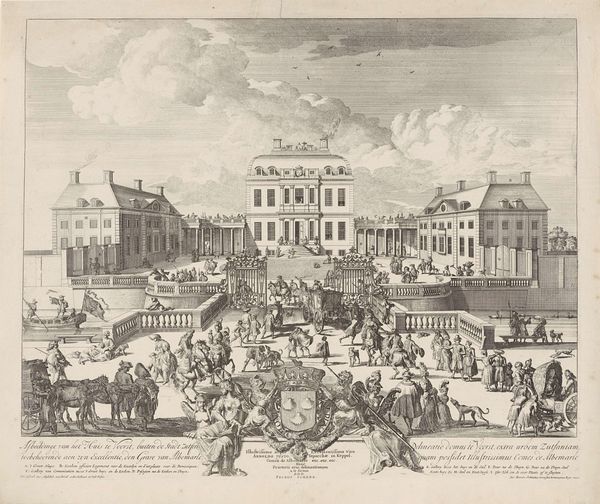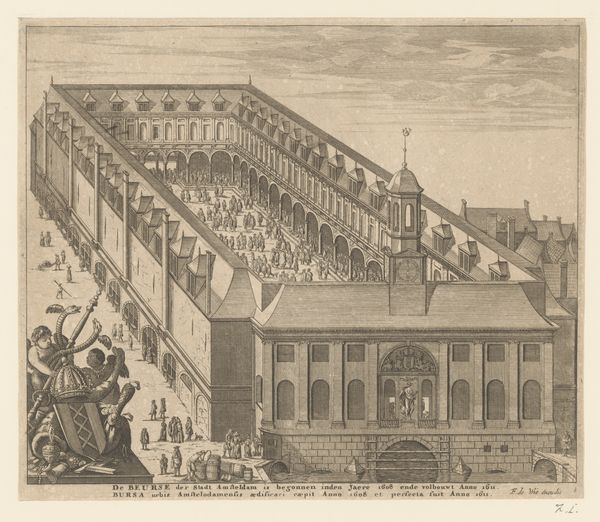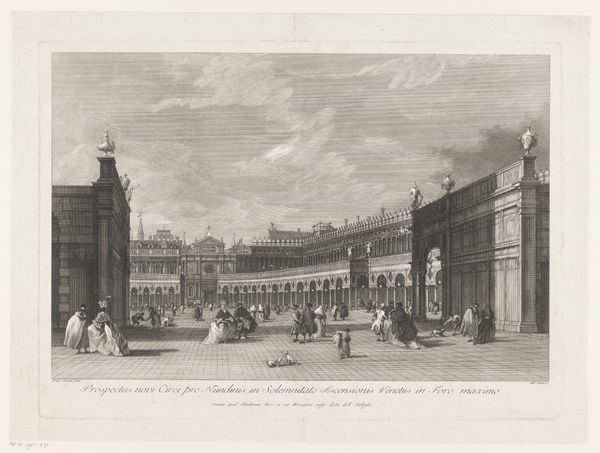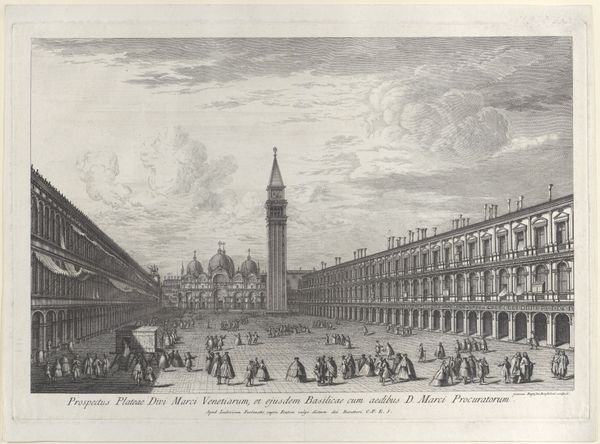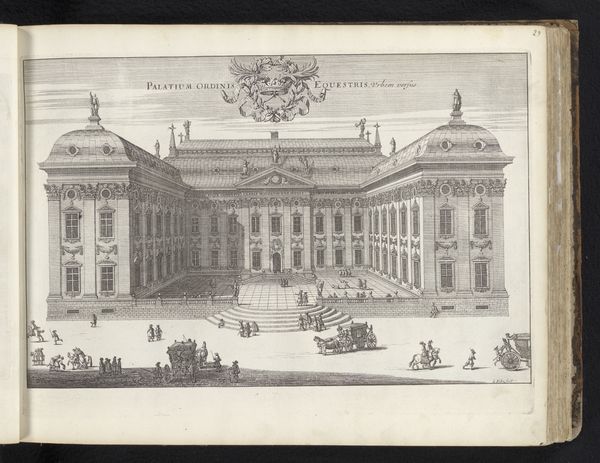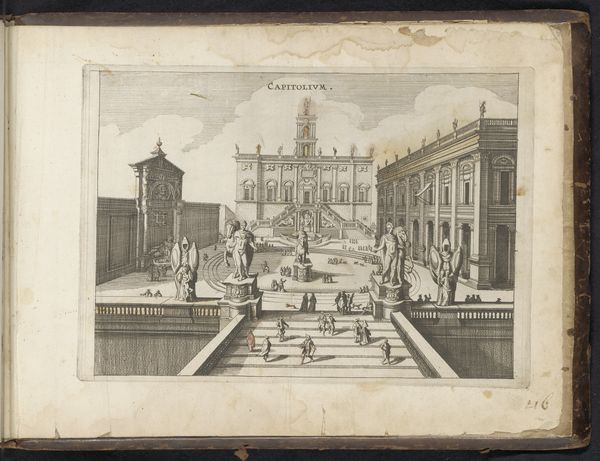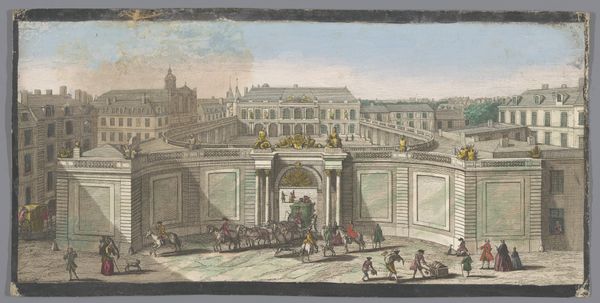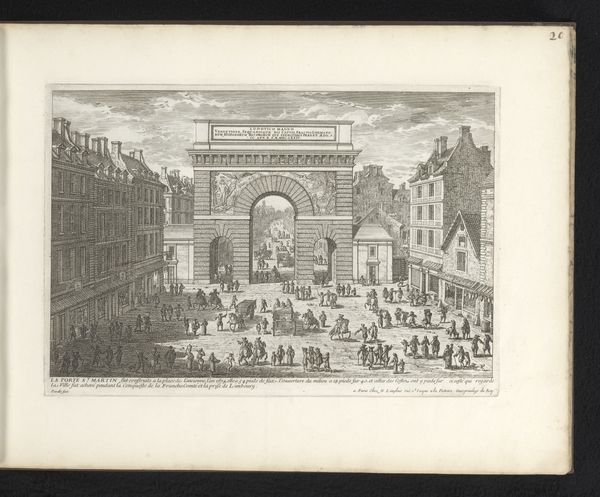
print, engraving
#
baroque
# print
#
landscape
#
cityscape
#
italian-renaissance
#
engraving
Dimensions: height 500 mm, width 660 mm
Copyright: Rijks Museum: Open Domain
Editor: This stately engraving before us, crafted between 1684 and 1691, captures "Gezicht op het Capitool te Rome," or "View of the Capitoline Hill in Rome" by Jan Lamsvelt. What strikes you about this cityscape? Curator: The density, the intricacy—the linear elements dominate, directing the eye in very specific pathways through the composition. Notice the emphasis on perspective and the controlled application of light and shadow created with close engraving lines. It’s almost claustrophobic despite the openness of the scene. Editor: Yes, I sense that feeling too. The Capitoline Hill has always represented power and authority—from ancient Roman temples to its Renaissance redesign by Michelangelo. Consider how Lamsvelt presents the ascent. The converging lines of the ramp, populated with figures, lead us towards the piazza at the summit where you will find those statues mounted. Curator: Absolutely. And observe how the artist uses the architecture—the buildings acting as framing devices. See how Lamsvelt carefully rendered the depth and structure, utilizing rigorous linear precision, which is particularly pronounced with his medium of print. The very act of capturing this iconic vista via engraving bestows a kind of permanence, don’t you think? Editor: Undoubtedly. Engravings, like this, allowed for widespread dissemination of cultural symbols. Here, the horse-drawn carriages are interesting juxtaposed next to those pedestrians climbing the hill, perhaps a nod to Rome's blending of power with more grounded human experience. Consider also how, by meticulously documenting it, he allows people who might never see Rome a way of visiting it vicariously, strengthening the mythology around its imperial grandeur. Curator: I concur—it transforms a three-dimensional space into a controlled, two-dimensional construction. A demonstration of technical skill as a way of conveying not just appearance, but the underlying structure. Editor: For me, understanding that intersection of cultural might with the artistic strategies makes Rome all the more fascinating and resonant, even now, centuries after Jan Lamsvelt first committed it to paper. Curator: Indeed, the strict control over medium mirroring the sense of Roman authority so well portrayed in the lines and spaces Lamsvelt creates.
Comments
No comments
Be the first to comment and join the conversation on the ultimate creative platform.
